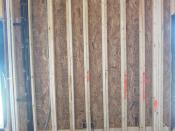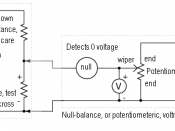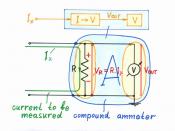Aim: - In this experiment I will be finding out the resistance of a wire in which its length is the variable. I will be investigating the process of how much the resistance changes due to the increase of the length of the wire (constant wire).
Electrical Current
Electric current is the rate of charge flow past a given point in all electric circuit, measured in coulombs/seconds, which is named amperes. In most DC electric circuits, it can be assumed that the resistance to current flow is constant so that the current in the circuit is related to voltage and resistance by Ohm's law.
I = V/R
The unit of electric charge is the coulomb. Ordinary matter is made up of atoms which have positively charged nuclei and negatively charged electrons surrounding them. Charge is made as a multiple of the electron or proton charge.
Also the rate flow of electric charge is called electric current and is measured in amperes.
Basics
In a conductor, electric current can flow freely and in an insulator it can't. Metals such as copper are good conductors while most non-metallic solids are good insulators having very high resistance to the flow of charge through them.
Conductor implies that the outer electrons of the atoms are loosely bound and free to move through the material. Most atoms hold on to their electrons tightly and are insulators. In copper, the outer electrons are essentially free and strongly repel each other.
Cross-section of copper wire:
Voltage
Voltage is a measure of the amount of 'push' given to electric charge in a circuit. If there is no 'push' electrons will not be moved around the circuit. This voltage would normally be supplied by a cell battery or power pack.
Voltage and energy are linked the more you push...


